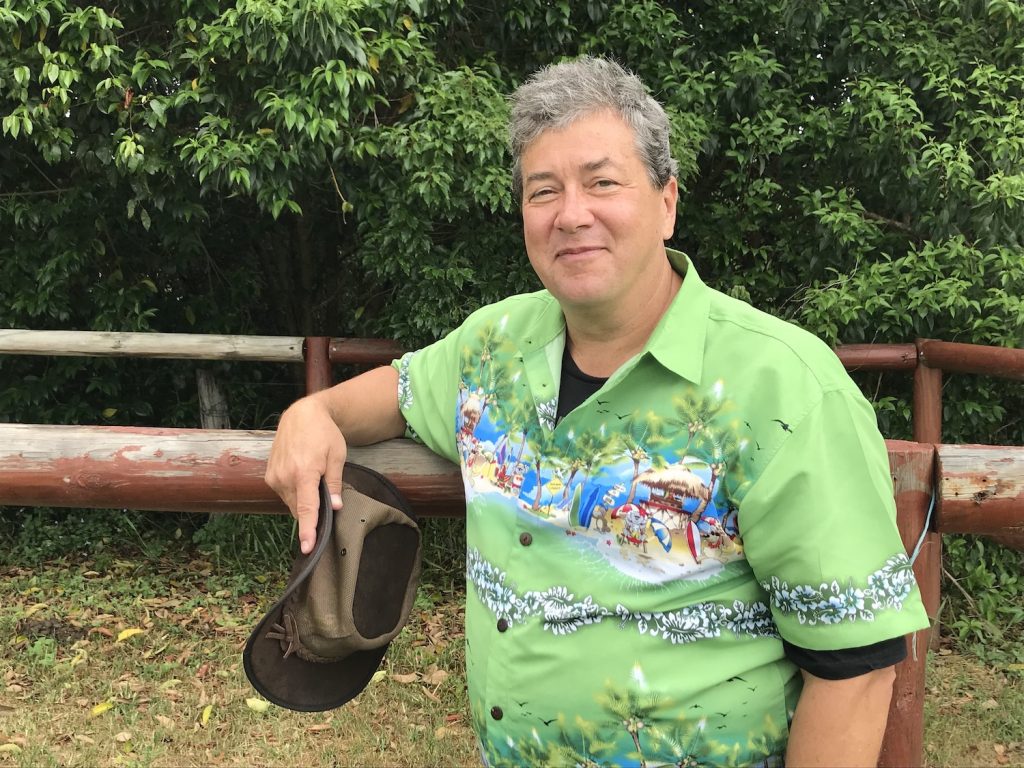[vc_row][vc_column][vc_column_text]
Two years after taking on the voluntary role of chair of Noosa Biosphere Reserve Foundation, Noosa Today checked in with Rex Halverson on how things were progressing.
Can you tell us briefly about yourself, what brought you to Noosa and why you took on the voluntary role?
I was born and raised in Southern California but my work has taken my family all over from the USA to the UK, Europe, Russia, China and finally Australia in 2008. As an expat my eldest enrolled in an International Baccalaureate program in England and wanted to continue in Australia. Landing in Maroochydore, we became involved in productions with the Noosa Arts Theatre and naturally fell in love with this place.
Having lived in Southern California I saw firsthand how an area can suffer from unbalanced development that robs the community of the very reason they wanted to live there in the first place. When the opportunity came to be involved in helping to progress a more sustainable approach in the Noosa Biosphere, I was determined to put my hand up.
NBRF has changed the way it operates now, can you briefly explain it’s role in the community and how it operates.
The NBRF is a not-for-profit organisation established by Noosa Council to enhance the biosphere reserve through research and projects that align with the UNESCO Man and the Biosphere Program. Our new model is to seek out projects and innovative ideas needing proof of concept research and/or seed funding and then search for funding.
While council continues to provide operational funding, and we can still apply for project funding, we are committed to finding external funds from a range of sources. Combined with in-kind contributions and project management, we’re able to deliver a high return on investment for the Noosa community.
Our new model of developing projects takes a collaborative community approach. Depending on the project, we may bring together on-ground groups and key individuals with university, expertise resources and local agencies to identify gaps in existing knowledge or actions and define priority actions needed. We then find funding and deliver a project or undertake research which is used to inform Noosa Council planning and best management practices.
This new approach was successful in developing a roadmap to save local koala populations and we’re now actively seeking funding to implement these actions. In November, we will undertake the same approach to develop a roadmap to conserve the Glossy Black-Cockatoo habitat.
What do you think is the greatest value of NBRF to the people of Noosa?
There are only a handful of UNESCO biosphere reserve sites in Australia, including Noosa. Our recognised balance between people and place doesn’t happen by chance. It’s the result of a whole-of community approach to sustainable development and a commitment to ongoing research, monitoring and education to maintain and nurture the living systems within it.
Our volunteer expertise-based board is made up of a diverse group with broad and deep experience, and a shared passion for the Noosa region and its people. It’s a free think tank if you will, that adds in-kind value and expertise to every project we undertake and help manage.
The NBRF through its biosphere reserve status facilitates and enables innovative approaches to conservation that has real, lasting impacts on how we live and interact within our environment. Through our projects, we’re linking community groups with research institutes and government agencies to progress research that impacts policy and management decisions, improves on-ground actions and kickstarts further investment in our region.
We aren’t just focused on environmental best practice, we consider the social and economic benefits and sustainable outcomes in our projects and priorities. This is, in essence, the principle of the UNESCO Man and the Biosphere designation.
Read the full interview with Noosa Today, Inside the Biosphere.[/vc_column_text][/vc_column][/vc_row]



